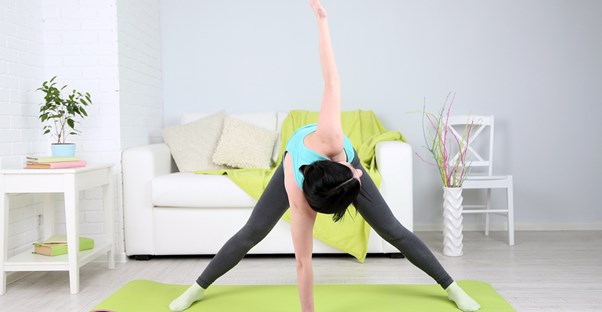Yoga is an extremely appealing activity for a lot of people. It’s a great full body workout that incorporates flexibility, strength, and stability. Not only that, but yoga is more than exercise—it’s a form of meditation, making it a truly head to toe activity, incorporating the mind and emotions as well. While some people prefer taking classes from a licensed instructor, not everyone is inclined to leave their house for a session. If you’re considering yoga-ing from home instead, make sure to consider both its benefits and risks.
Privacy Concerns
Probably the best part of at-home yoga is that you don’t have to wander about in public wearing skin-tight pants. Plus, you don’t have to worry about the person behind you looking at your downward-facing dog. Since yoga so fully incorporates the mind and spirit, it can be a lot easier to lose focus when all your concentration is on what everyone around is doing or thinking, particularly about you. It’s also difficult to follow an instructor who is going too fast for you to follow, if you’re new to yoga. Conversely, it can be very frustrating to feel held back by the rest of the class if you consider yourself a yoga aficionado.
On the other hand, not every home guarantees solitude, either. Having the rest of the household burst in during your sun salutations can cause just as big a break in concentration as trying to figure out how the woman across the room got her feet that much farther over her head than you did.
Scheduling Concerns
When you’re part of a class, you know other people are expecting your presence, which can encourage attendance and participation. Admittedly, it’s a definite bonus to be able to structure your session around your schedule, instead of someone else determining a preset, long-term engagement.
Unfortunately, a lot of people left to their own devices and schedules, have a tendency to put off sessions, until those sessions get farther and farther apart, possibly disappearing altogether. Even if this doesn't happen, you may find them becoming shorter and shorter.
Injury Concerns
Yoga classes are certainly not cheap. This makes take-home literature and free YouTube videos extremely alluring. But just because you have the know-how doesn’t mean you have the knowledge. While using a video instructor is probably better than just winging it and trying to copy a photograph from a book, there still isn’t going to be anyone around to make sure you’re exhaling at the right moment or that your back hasn’t fallen to an angle that’s going to do more harm than good.
Even if you think you’re doing it right, it’s almost impossible to know that you have all of your joints in all the correct places. Plus, watching yourself in a mirror is tricky, especially since it changes the angle of your body every time you turn to check yourself out. The bottom line is, you get what you pay for—and a few yoga classes are definitely cheaper than a hip replacement or spinal fusion.




